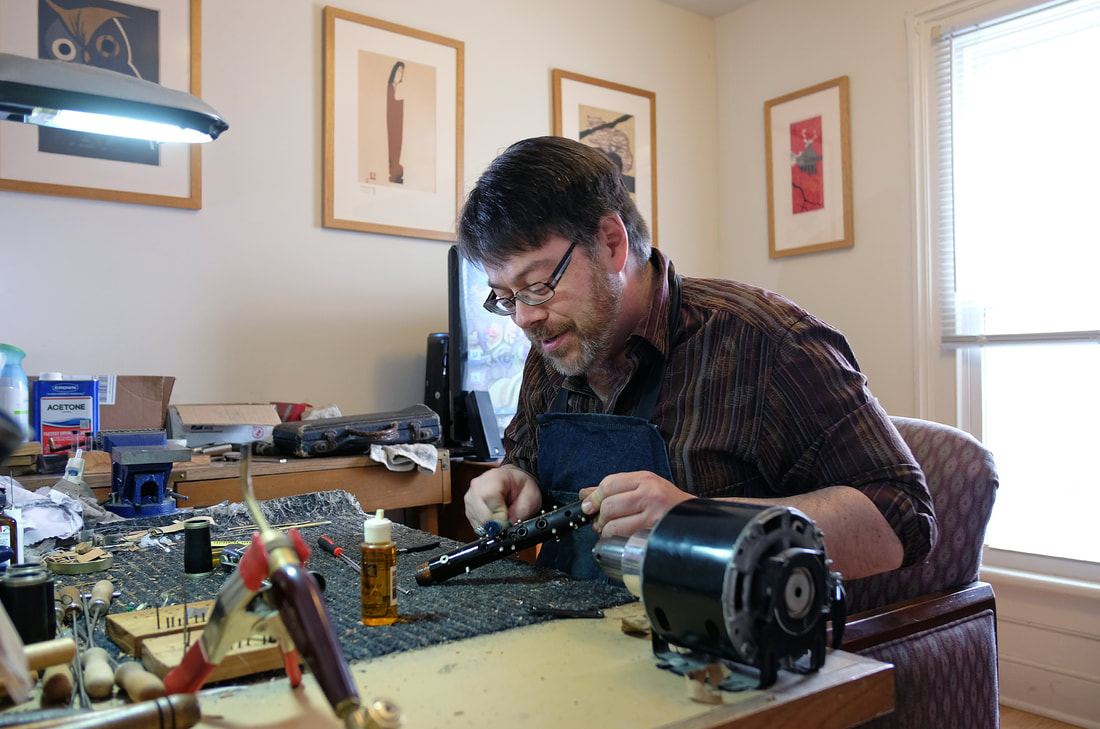 To continue: So, why grenadilla wood in the first place? I wonder about that myself, and encourage speculation from readers. Before grenadilla, boxwood and various fruitwoods were universally used for woodwind instruments but, at some point in the late 19th century, everyone switched to grenadilla. I know that it is hard, mills well, and is attractive. However, it is also slow-growing, in limited supply, and requires long seasoning for good results: according to an interview with the late Hans Moennig, when he started as a repairman in the 20's, Buffet was aging its wood blanks for over 20 years before milling. At his retirement in the early 80's, it was down to about 7 years - I don't know what it is now... Buffet's experiment with the 'Greenline' model (or 'Greenstick', as I've heard them referred to, based on how the tenons fracture) of grenadilla dust with a binder seems a promising step in a new direction but, like First Act instruments from China, further refinement would seem to be required :) I look forward to new materials and technologies to bring the clarinet into the 21st century; improving intonation and performance, lowering cost (anyone tried to buy an R13 lately?), and reducing our dependence on and harvesting of a slow-growing hardwood. Would love to hear other ideas and perspectives on the subject: anyone feel like guest writing a column?
2 Comments
|
Archives
February 2024
AuthorThe Licorice Shtick Blog is the creation of the Vintage Clarinet Doctor, a Winston Salem, NC based woodwind instrument repair shop specializing in vintage and antique clarinets, saxophones, and the occasional flute. Categories |

 RSS Feed
RSS Feed